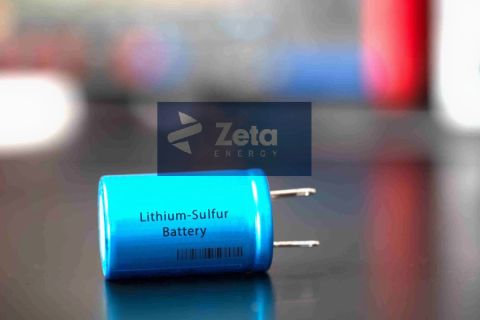Subsea blockages are a common industry challenge. They can be so complex and costly to treat that some operators have multiple flowlines that have been left blocked for more than a decade. A tricky mix of contributing factors can make it difficult to diagnose the cause of the blockage, the exact location, and the best way to treat it.
Challenging reservoir conditions play a role, with water depth, tie-back distance, and temperature all having an effect. Some blockages are simply due to aging equipment or human error.The consequences of such blockages are far-reaching. Within the subsea infrastructure, blockages can affect risers, flowlines, pipelines, umbilicals, pipeline end terminations, and manifolds.
Blockages can prevent delivery of critical chemicals to subsea facilities. Wax, scale, asphaltene, or hydrates buildup can severely affect production, leading to a significant revenue loss.
Remediation
Remediation methods historically have been costly. These have included deploying a coiled tubing system from a rig into the pipeline or undertaking subsea interventions using an ROV or saturation divers.
Paradigm Flow Solutions developed Pipe-Pulse as a flow oscillation method for the non-intrusive removal of subsea blockages. It effectively takes the treatment to the topside for the first time.
The need for a better approach led Paradigm Flow Solutions, a subsidiary of Netherlands-based Paradigm Group, to develop the Pipe-Pulse service. Pipe-Pulse works remotely and can locate and remove blockages in long-distance pipework up to 48 km (30 miles) away. The system is designed to be connected on the topside facilities of the host platform through either the pig launcher or the umbilical termination unit to clear blockages. The unit delivers into the pipeline or subsea umbilical high energy and volume pressure pulses, which are transmitted at the speed of sound to the blockage several miles away.

This cut-away diagram represents high-frequency, low-amplitude pressure waves being sent through an umbilical to remove a blockage. (Images courtesy of Paradigm Flow Solutions)
Operated by three Paradigm engineers per operation, the system can completely remove persistent blockages in a matter of days by sending high-frequency, low-amplitude pressure pulses into the flowline while controlling the length and pressure of the pulse.
The system operates using a complex series of control valves, which are contained within the main body of the Pipe-Pulse unit and are automatically operated by the touch screen control panel. Proprietary algorithms determine the optimum wave structure for each pulse, of which there are potentially millions generated. The Pipe-Pulse unit physically creates and injects the manufactured pulse into the pipeline, through which it is transmitted to the front face of the blockage. These controlled pulses allow energy to be transferred into the pipeline in a safe manageable way that is far more effective than applying pressure alone.
Water typically is the main fluid used; however, a number of chemicals have been used in the past when water incompatibility was an issue. Solvents and monoethylene glycol water have been used with success, but these ideally are avoided due to handling issues.
Custom design
A Pipe-Pulse job is about more than just breaking down a blockage. Each project is uniquely engineered to consider the removal of the blockage debris depending on the subsea infrastructure. It is sometimes possible to push the blockage to a larger flowline and circulate it out. On occasion, however, it may be necessary to overflush with dissolving chemicals once a bypass has been achieved or bring on flow from a well to flush the debris back to the surface. If it is possible, samples are captured to arm clients with data that can be used to prevent a recurrence.
The system can operate at 10,000 psi and achieve a flow of 5 bbl/minute. The system is 2 m high by 1 m wide (6.5 ft high by 3.3 ft wide). The two units needed for operation are 1,763 lbs each, so they do not take up a large amount of space. The system has been designed and tested for use in Zone 1 hazardous areas. Typically, a high-pressure pump and container are deployed on projects, in addition to the Pipe-Pulse system.
Several operators have benefited from this technology. On Talisman Energy’s Hannay subsea development, Pipe-Pulse cleared three blocked chemical injection lines in a 13.7-km (8.3-mile) tieback to the Buchan Alpha platform. The operation took six hours on each line over two days.
A 15-km (9.1-mile) flowline at Shell’s Central North Sea Gannet asset had suffered a persistent blockage for 11 years, with a loss of production estimated at 350 b/d. The system cleared and flushed the line within six hours.
It is not uncommon for pigs to get stuck, particularly when there is paraffin or wax in the line. In one application in the Gulf of Mexico, Pipe-Pulse cleared a pig stuck 10.3 miles (17 km) into a flowline and reestablished production for Petrobras Americas’ Cottonwood 8-in. flowline.

The system operates using a complex series of control valves contained within the main body of the unit.
Finding the problem
In a North Sea application, the system accurately detected a blockage for Maersk on the Janice subsea development that turned out to be a collapsed flexibile jumper 10 km (6 miles) into the gas lift line of an umbilical. This knowledge saved the client an estimated US $660,000 by not having to mobilize a diving support vessel (DSV) to investigate the blockage.
This feature of the service is called Find-Block, a blockage detection system developed by Paradigm that can be used to find blockages as far as 1,000 m (3,330 ft) out. The system was used in response to poor information being relied on by operators in order to develop DSV intervention programs. Poor information can lead to many days of “investigative work” that could drive up intervention timescales and costs.
The Find-Block system is powered by the Pipe-Pulse system and takes into account the fluids, pipe type, and pressures to establish an accurate wave speed, which can be physically correlated against a section of the subsea infrastructure.
This allows for very accurate blockage detection both in pipelines and subsea wells, orders of magnitude greater than what was achievable with conventional techniques. Accurate blockage detection can save significant intervention time if the problem is of a technical nature, such as with a broken valve or collapsed flexible.
The system is being further developed to incorporate a Find-Leak module to provide leak detection capabilities and at present is in trial phase pre-deployment. Leak detection capabilities will help solve the problem of leaking retired umbilicals that cannot be flushed because of regulatory concerns. Once the leak location has been determined, it can be plugged using internal sealing techniques and expelling the fluid, allowing decommissioning to take place.
The rapid response service also minimizes HSE exposure because it reduces the need for diver intervention programs and diver intervention into lines that may have trapped pressure.

Each project is uniquely engineered to consider the removal of the blockage debris depending on the subsea infrastructure.
Recommended Reading
1Q24 Dividends Declared in the Week of April 29
2024-05-03 - With earnings season in full swing, upstream and midstream companies are declaring quarterly dividends. Here is a selection of dividends announced in the past week.
Analyst Questions Kimmeridge’s Character, Ben Dell Responds
2024-05-02 - The analyst said that “they don’t seem to be particularly good actors.” Ben Dell, Kimmeridge Energy Partners managing partner, told Hart Energy that “our reputation is unparalleled.”
Tellurian Reports Driftwood LNG Progress Amid Low NatGas Production
2024-05-02 - Tellurian’s Driftwood LNG received an extension through 2029 with authorization from the Federal Energy Regulatory Commission and the U.S. Army Corps of Engineers.
Zeta Energy Appoints Michael Everett as COO
2024-05-02 - Prior to joining Zeta Energy, a lithium-sulfur battery developer, Michael Everett previously served as president and COO at Advanced Battery Concepts.
Shell Launches $3.5 Billion Share Buyback Program
2024-05-02 - Shell, which posted first-quarter adjusted earnings of $7.7 billion, will cancel all of the shares it buys.





